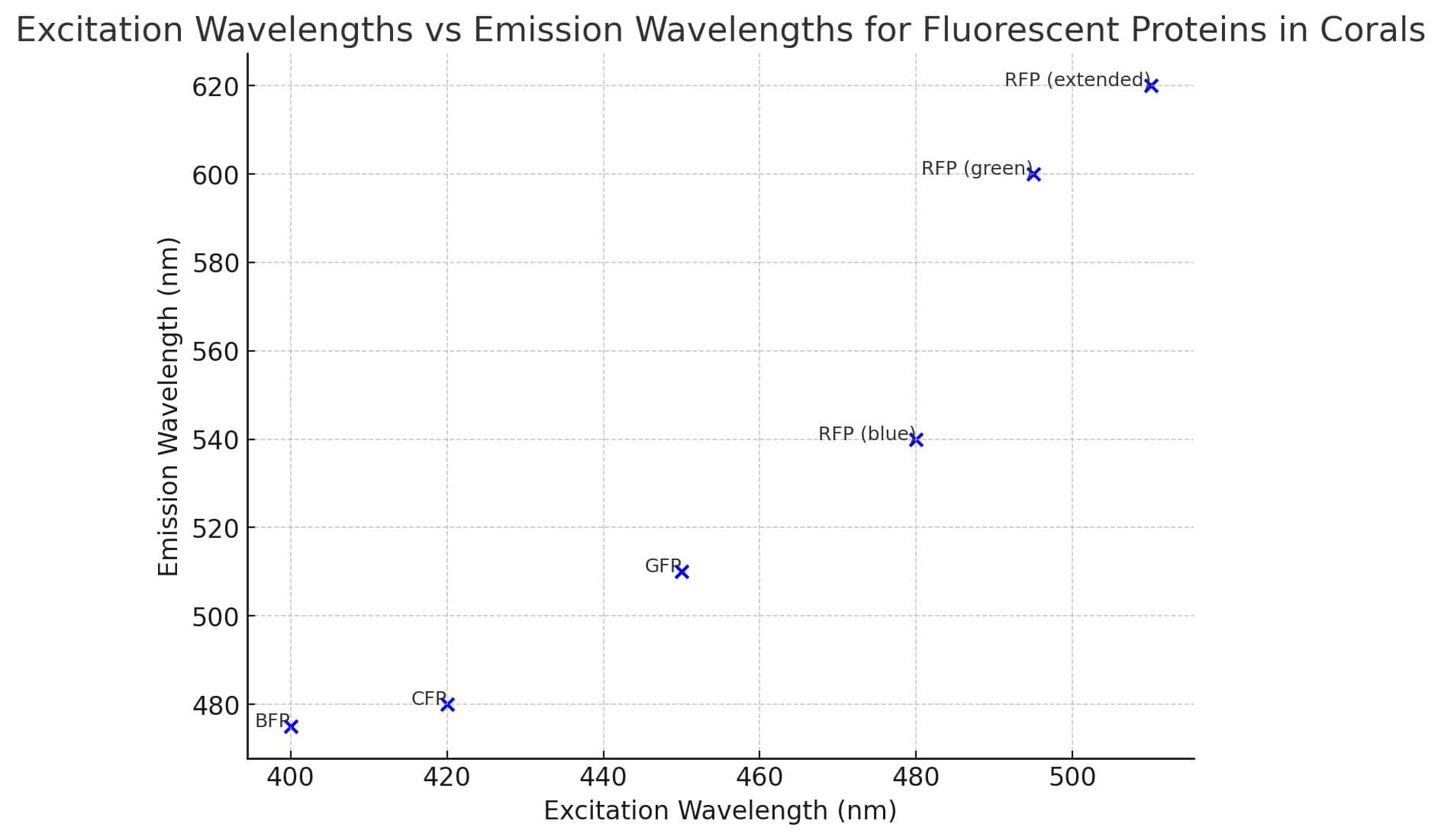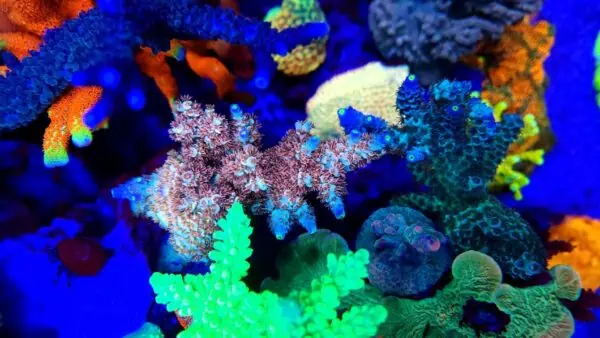Salt water blog
Unveiling Coral Fluorescence: The Role of the “Wide-Band-Blue” Spectrum
Fluorescent Proteins and the Perfect Light Spectrum for Vibrant Coral Colors
Ever wondered why corals glow with such stunning, vibrant colors under aquarium lights? The secret lies in coral fluorescence, a fascinating process involving special proteins that absorb and re-emit light in beautiful, eye-catching hues. Whether you’re a hobbyist, coral breeder, or aquarium professional, understanding how this works is key to keeping your corals healthy and their colors bright.
What Makes Corals Glow?
The magic behind coral fluorescence comes from proteins like blue fluorescent proteins (BFPs), cyan fluorescent proteins (CFPs), green fluorescent proteins (GFPs), and red fluorescent proteins (RFPs). These proteins absorb certain wavelengths of light and then re-emit that light in longer wavelengths, creating the vibrant colors we love. Each type of protein is excited by different wavelengths, which is why the right lighting is so important for showcasing the full spectrum of coral colors.
Lighting and Fluorescence: The Key to Vibrant Colors
For example, BFPs and CFPs are activated by UV light in the range of 400–420 nm, while GFPs respond best to blue light (450–495 nm). RFPs, on the other hand, light up with both blue and green light (495–510 nm). To bring out the best in all these proteins, it’s important to use lighting that covers the 400–500 nm range, often referred to as the “Wide-Band Blue.”
Why the Right Spectrum is Crucial for Coral Health
This wide range of light mimics natural underwater conditions, helping to maximize coral fluorescence and support overall coral health. But it’s not just about looks—these fluorescent proteins serve a purpose. They help protect corals from harmful UV rays and enhance photosynthesis by reflecting light to the symbiotic algae (zooxanthellae) living within the coral tissue.
How Proper Lighting Transforms Coral Appearance and Health
For aquarists, ensuring the right lighting within the wide blue spectrum can significantly enhance both the appearance and health of your corals. Advanced LED lighting systems that cover the full range of 390–510 nm are perfect for bringing out the most vibrant coral displays, ensuring rich coloration and promoting optimal growth.
Whether you’re just starting your reef aquarium journey or you’re a seasoned coral breeder, investing in quality lighting and understanding how it impacts coral fluorescence can make all the difference. By providing the proper lighting environment, you’ll enjoy corals that fluoresce in full, dazzling color, creating a thriving, stunning underwater world in your own aquarium.
Understanding the Fluorescence Process in Coral Proteins
The magic behind coral fluorescence comes down to certain proteins known as fluorescent proteins (FPs). These proteins absorb light at one wavelength and re-emit it at a longer wavelength, creating the glow we see. At the core of each fluorescent protein is a special group of atoms called a chromophore, which is responsible for absorbing and emitting light.
Here’s how it works: When light of a specific wavelength, known as excitation light, hits the chromophore, it causes the protein’s electrons to move to a higher energy state—a process known as excitation. The protein then undergoes a small structural change to stabilize this excited state. After a brief moment, the electrons release energy and return to their normal state, a process called emission. The energy released is emitted as light at a longer wavelength, which is what we observe as fluorescence.
This difference between the absorbed light and emitted light is known as the Stokes shift. It’s the reason fluorescent proteins in corals absorb higher-energy light (such as blue or UV) and emit lower-energy light (like green, red, or cyan).
Here is a chart illustrating the relationship between excitation and emission wavelengths for fluorescent proteins in corals. Each protein responds to a specific range of light for excitation and emits light at longer wavelengths, creating the beautiful fluorescence we observe in coral reefs. This chart highlights how different wavelengths are essential for bringing out the vibrant colors in corals.


